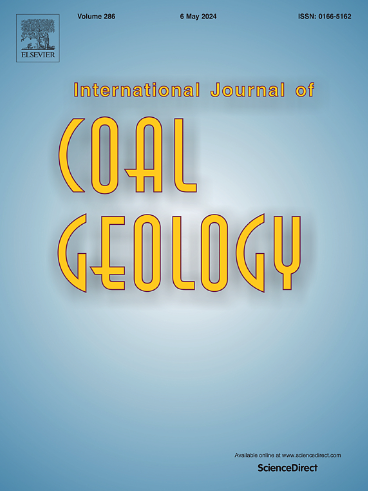Implications of element enrichment in paralic coals from the Carboniferous in England
IF 5.7
2区 工程技术
Q2 ENERGY & FUELS
引用次数: 0
Abstract
The enrichment of trace elements in coals is of significant economic importance because of the growing demand for the critical elements. Several enrichment processes have been identified and in this paper the role of palaeosalinity is evaluated using published data from the East Pennine Coalfield (UK). The coal and associated mudrocks for which comprehensive ICP- AES and ICP-MS analyses are available is the Parkgate Coal. This is a high volatile bituminous coal of Upper Carboniferous (Pennsylvanian) age with a variable S content mainly due to pyritic S (Total S = 2.34 ± 1.83 %, Pyritic S = 1.17 ± 1.79 %).
Supporting information on the mineralogy of this and other major coals comes from XRD analyses. Although there is an extensive geochemical data base on coals and mudrocks from this Coalfield, most of the analyses were made using XRF with a restricted suite of trace elements (13). Comprehensive analyses of marine shales are not available for this coalfield and to evaluate the marine influence use is made of analyses of samples from the Netherlands. These samples are of comparable age and from the same extensive depositional area. Enrichment values calculated for the Parkgate Coal based on detrital trace elements in the mudrocks show that the chalcophile elements are enriched and pyrite is the major host for many of them. Other elements are enriched including Ge and Be and there is an organic association, possibly reflecting an original plant origin. The importance of a seawater control is demonstrated by close similarities in the enrichment values between the coals and marine shales. Use could be made of the enrichment values determined in this work to identify a seawater influence in coals elsewhere. Elements not enriched, and for which other controls operated, are Ga, Li, Zr and Nb. Although not confirmed for the UK coals the REE are probably in the same category. Alternatives to the control of seawater on the element enrichments in the studied coals are considered and rejected as having little or no effect.
英国石炭系近流煤元素富集意义
随着煤中微量元素需求量的不断增长,煤中微量元素的富集具有重要的经济意义。本文已确定了几个富集过程,并利用英国东彭宁煤田已发表的数据评估了古盐度的作用。具有全面ICP- AES和ICP- ms分析的煤和伴生泥岩是帕克盖特煤。这是一种上石炭世(宾夕法尼亚)时代的高挥发性烟煤,硫含量变化主要是由于黄铁矿S (Total S = 2.34±1.83%,黄铁矿S = 1.17±1.79%)。该煤和其他主要煤的矿物学支持信息来自XRD分析。尽管该煤田的煤和泥岩有广泛的地球化学数据库,但大多数分析都是使用XRF和有限的微量元素组合进行的(13)。没有对该煤田进行海洋页岩的全面分析,评估海洋影响的使用是对来自荷兰的样品进行分析。这些样品的年龄相当,来自同一广泛的沉积区。根据泥岩碎屑微量元素计算的富集值表明,煤中亲铜元素富集,其中黄铁矿为主要寄主。其他元素如Ge、Be等均富集,且存在有机关联,可能为植物源。煤与海相页岩的富集值非常相似,说明了海水控制的重要性。可以利用在这项工作中确定的富集值来确定海水对其他地方煤的影响。未富集的元素有Ga、Li、Zr和Nb。尽管英国煤炭的稀土元素含量尚未得到证实,但它们可能属于同一类别。考虑了控制海水对所研究煤中元素富集的替代方法,并以影响很小或没有影响而拒绝。
本文章由计算机程序翻译,如有差异,请以英文原文为准。
求助全文
约1分钟内获得全文
求助全文
来源期刊

International Journal of Coal Geology
工程技术-地球科学综合
CiteScore
11.00
自引率
14.30%
发文量
145
审稿时长
38 days
期刊介绍:
The International Journal of Coal Geology deals with fundamental and applied aspects of the geology and petrology of coal, oil/gas source rocks and shale gas resources. The journal aims to advance the exploration, exploitation and utilization of these resources, and to stimulate environmental awareness as well as advancement of engineering for effective resource management.
 求助内容:
求助内容: 应助结果提醒方式:
应助结果提醒方式:


